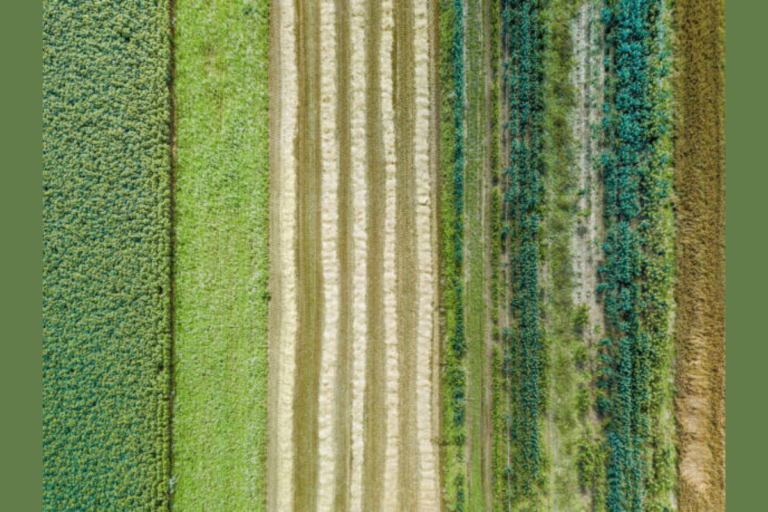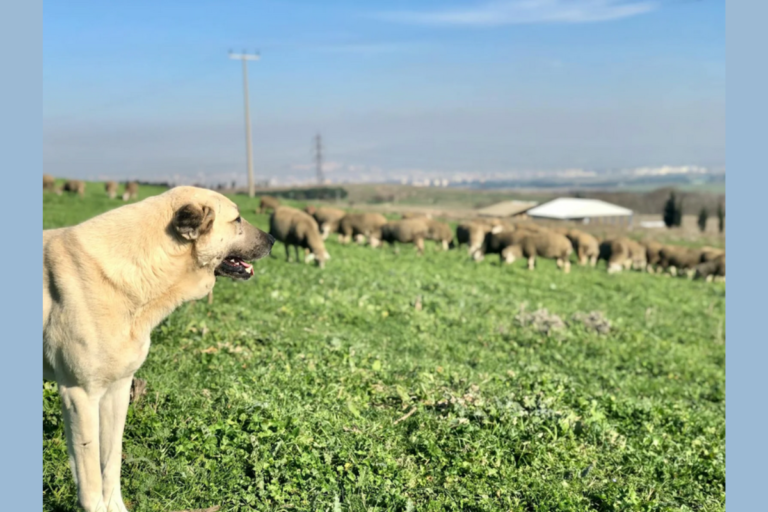cover crop seeds for soil regeneration & health

Cover crop seeds for soil regeneration are a cornerstone of sustainable farming practices. Soil health forms the critical foundation upon which all other agricultural practices are built, and selecting the right cover crop seeds specifically for soil regeneration can accelerate your farm’s journey toward sustainability. Among the most cost-effective and powerful tools available to farmers looking to improve soil quality rapidly, these specialized cover crop seeds offer remarkable returns on investment. However, not all cover crops are equal for soil regeneration speed and effectiveness. Choosing varieties bred explicitly for soil health restoration can dramatically improve your results.
Why Cover Crops Seeds for Soil Regeneration Are Your First Step Toward Sustainability
Before diving into specific seed recommendations, it’s worth understanding why cover crops consistently emerge as the highest-ROI first intervention in our sustainability pyramid approach:
- Quick Economic Returns: A $30–40/acre investment typically generates fertilizer savings of $30–50/acre within 1–3 seasons [1].
- Minimal Equipment Requirements: Many varieties can be seeded with standard drills or broadcast equipment [2].
- Soil Improvement Multiplier Effect: Benefits compound over time, enhancing all subsequent sustainability practices.
- Climate Resilience: Increased water infiltration and retention help manage both drought and flooding events [3].
Research Spotlight: A meta-analysis found that cover crops can increase soil organic carbon in surface layers by 15.5%, with results often seen within 3–5 years [4]. Another study reports that cover crop users in the U.S. experienced average corn yield boosts of 3.4% and soybean yield increases of 2.8% even in the first year of adoption [1].
Top Categories for Cover Crop Seed Soil Regeneration
1. Deep-Rooted Soil Decompactors
Best for: Compacted soils, poor infiltration, hardpan layers
- Daikon Radish: Roots reach 18–30 inches deep, creating bio-channels for water and roots [5].
- Yellow Sweet Clover: Develops a deep taproot and adds nitrogen, making it ideal for dual-purpose regeneration [6].
- Forage Turnips: Blend biomass with deep soil penetration.
Success Story: One farm in Michigan observed a 4x improvement in water infiltration after just one season of daikon radish [2].
2. Nitrogen-Fixing Legumes
Best for: Reducing fertilizer dependency, enriching soil microbiology
- Hairy Vetch: Winter-hardy and can fix 90–160 lbs of nitrogen per acre [7].
- Crimson Clover: Quick to establish and fixes up to 130 lbs N/acre [8].
- Austrian Winter Peas: Cold-tolerant and excellent for biomass and nitrogen [9].
Field Results: Iowa corn farmers reported a 30% reduction in nitrogen inputs following cover crops with hairy vetch [1].
3. Biomass Builders
Best for: Rapid organic matter increase, weed suppression, erosion control
- Cereal Rye: One of the top biomass producers in cool weather (up to 8,000 lbs/acre) [1].
- Sorghum-Sudangrass: Rapid summer growth with allelopathic benefits.
- Annual Ryegrass: Builds strong root systems that improve soil tilth.
Measurable Impact: A Pennsylvania farm documented a 0.4% increase in soil organic matter after one season with a biomass-heavy cover crop and reduced tillage approach [2].
Building Your Custom Soil Mix Using Cover Crops Seeds for Soil Regeneration
Multi-species mixes often work better than single-species solutions by combining functional benefits:
3-Way Mix Blueprint
- 1 deep rooter (radish, turnip)
- 1 nitrogen fixer (clover, vetch, pea)
- 1 biomass builder (rye, oat, sudangrass)
Example Mixes by Region
Cooler Climates:
- 2 lbs Daikon Radish
- 15 lbs Hairy Vetch
- 30 lbs Cereal Rye
Warmer Climates:
- 2 lbs Yellow Sweet Clover
- 15 lbs Crimson Clover
- 20 lbs Annual Ryegrass
When to Plant Cover Crop Seeds for Soil Regeneration
- Late Summer/Early Fall – Best for winter-hardy species like rye or vetch
- Post-Harvest – Great for quick-growing mixes in warm regions
- Frost-Seeding – Broadcast legumes like clover in early spring
- Relay-Cropping – Interseed into standing crops just before harvest [1]
What Do Cover Crop Seeds for Soil Regeneration Cost (and Save)?
| Category | Cost per Acre |
|---|---|
| Seed (3-way mix) | $25–40 |
| Planting | $10–15 |
| Termination | $10–15 |
| Total Cost | $45–70 |
Expected Returns Within 1–3 Years
- Fertilizer savings: $30–50/acre
- Erosion prevention: $10–20/acre
- Yield variation: –$10 to +$25/acre
- Water management benefit: $15–30/acre
ROI Timeline: Net ROI typically becomes positive by Year 2, with increasing returns each year [1].
Real-World Success Stories with Cover Crop Seeds for Soil Regeneration
Jeff Olson – Winfield, Iowa
Thanks to his cover crop program on 1,300 acres, Jeff Olson saw soil organic matter increase from 2.8% to over 4%, improved infiltration, and better field access after heavy rains [2].
David Brandt – Carroll, Ohio
Since the 1970s, Brandt has been an early adopter of no-till and cover cropping. Through a consistent mix of hairy vetch, winter peas, and cereal rye, he has dramatically reduced his commercial fertilizer needs while improving soil health [10].
Where to Buy Cover Crop Seeds for Soil Regeneration
West Coast Seeds – Trusted supplier of high-germination, organic cover crop seed mixes for Canadian and U.S. growers. Discover their great selection of cover crops here:
Support Our Work: Use our affiliate links above to support Ecosystems United while sourcing your next cover crop mix.
Paving Your Soil Regeneration Journey with Cover Crop Seeds
Inspired by the prospect of stackable sustainability? Cover crop seeds for soil regeneration form the essential foundation of our Agricultural Sustainability Pyramid, a blueprint for building regenerative, resilient, and economically strong farms from the ground up.
- If this article helped you visualize how cover crop seeds for soil regeneration can create a path toward sustainable farming that works with your reality—not against it—share it with fellow farmers, food leaders, and land stewards in your community.
- Subscribe to Ecosystems United for practical tools, thoughtful insight, and emerging strategies in regenerative agriculture, including seasonal guides on the best cover crop seeds for your specific soil regeneration goals.
We’d love to hear from you: Where are you in the sustainability pyramid? Have you started implementing cover crop seeds for soil regeneration on your farm? Which cover crop mix feels most achievable (or the most out of reach) on your farm right now? Share your experiences as we build profitable, regenerative agricultural systems together.
References:
- Myers, R., Weber, K., & Tellatin, S. (2021). Cover Crop Economics. Sustainable Agriculture Research and Education. https://www.sare.org/resources/cover-crop-economics/
- Cover Crop Strategies. (2021). Long-Term Cover Cropping Reinvigorates Iowa Farmer’s Soils. https://www.covercropstrategies.com/articles/2577
- USDA-NRCS. (2016). Cover Crop Termination Guidelines. https://www.nrcs.usda.gov/sites/default/files/2022-10/cover-crop-termination-guidelines.pdf
- Poeplau, C., & Don, A. (2015). Carbon sequestration in agricultural soils via cultivation of cover crops – A meta-analysis. Agriculture, Ecosystems & Environment, 200, 33–41. https://doi.org/10.1016/j.agee.2014.10.024
- University of Missouri Extension. (n.d.). Cover Crops for Soil Health. https://extension.missouri.edu/publications/g4161
- SARE. (n.d.). Sweetclover Cover Crop Overview. https://www.sare.org/resources/sweetclover/
- Penn State Extension. (2016). Hairy Vetch as a Cover Crop. https://extension.psu.edu/hairy-vetch-as-a-crop-cover
- Sustainable Agriculture Research and Education. (n.d.). Managing Cover Crops Profitably. https://www.sare.org/resources/managing-cover-crops-profitably-3rd-edition/
- University of Nebraska Extension. (n.d.). Winter Peas as a Cover Crop. https://cropwatch.unl.edu
- SARE. (n.d.). Dave Brandt – Carroll, Ohio. https://www.sare.org/what-we-do/impacts-from-the-field/cover-crop-innovators-video-series/dave-brandt-carroll-ohio/







One Comment